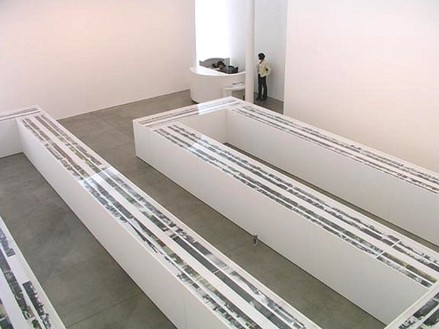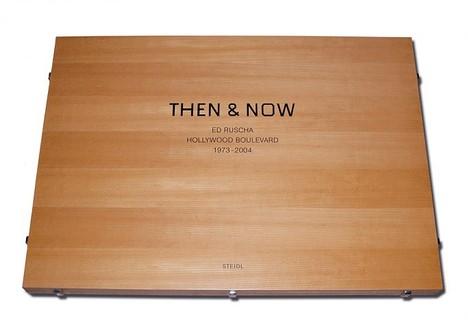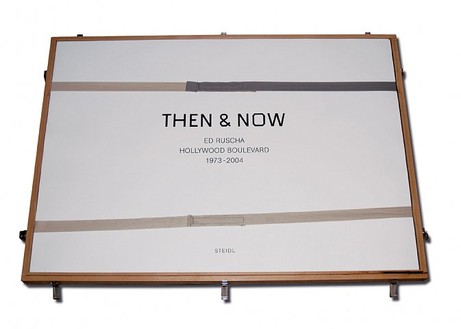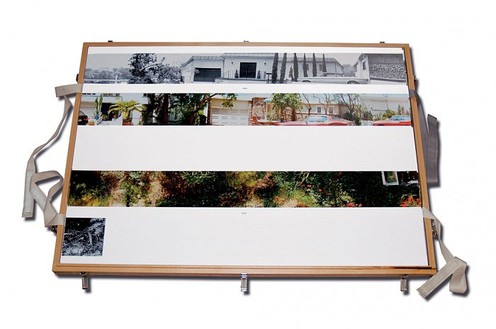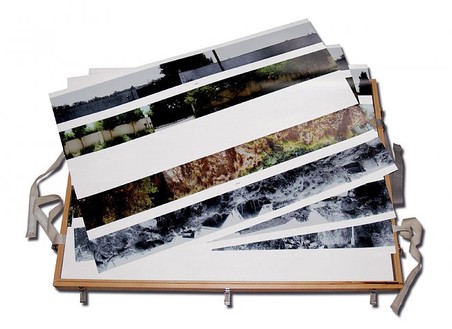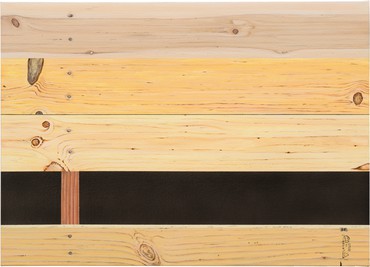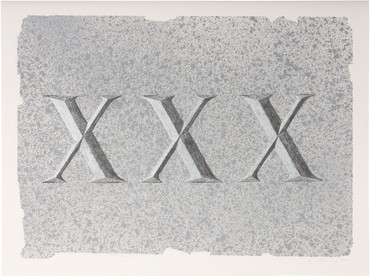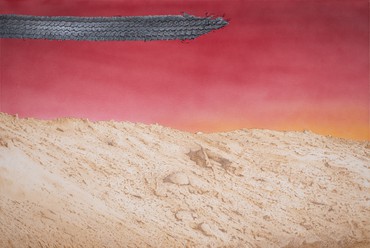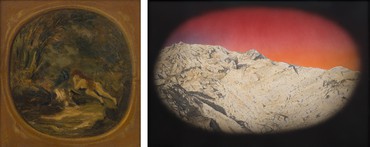About
Gagosian, in conjunction with Steidl Verlag, is pleased to present Ed Ruscha: Then & Now, a set of photographic prints that documents Hollywood Boulevard, first in 1973 and then thirty-one years later in 2004. This exhibition also marks the ten-year anniversary of Gagosian Beverly Hills.
Between 1962 and 1978, Ed Ruscha produced seventeen influential artist’s books, usually self-published and in small print runs. Perhaps the most well known of these books is Every Building on the Sunset Strip, published in 1966, which shows a famous stretch along Sunset Boulevard in Los Angeles. In 1973, Ruscha followed the same procedure, this time documenting Hollywood Boulevard, producing two continuous panoramic views of the north and south sides of the street. Loading a continuous strip of black-and-white 35mm film into his motor-drive Nikon F2 and then mounting it on a tripod in the bed of a pickup truck, Ruscha drove back and forth across the entire length of the street, shooting it frame by frame. The negatives were developed, but never published.
In 2004, the artist reshot Hollywood Boulevard. The same type of camera equipment was used to rephotograph the street, but this time on 35mm color-negative film. In Then & Now, the original 1973 panoramic images run parallel to their 2004 versions, documenting the changes that have occurred over three decades.
This time the photos are in color, but that is a small difference compared with the many buildings which have changed, been altered, disappeared. The famous Grauman’s Chinese Theatre with its sidewalk of movie stars’ hand and footprints is now a large complex with a giant archway; parking lots lay where buildings once rose; mom and pop shops are now chains. Hollywood Boulevard’s sedate, old-style glamour of 1973 has a new facade of uniformity and tourist amnesia.
—Karen Marta, Domus, September 2005
This Ed Ruscha multiple is a set of 142 photographic prints housed in a handmade wooden crate signed and numbered in an edition of 10 (with 6 AP).
Share

Flags
Gillian Pistell writes on the loaded symbol of the American flag in the work of postwar and contemporary artists.
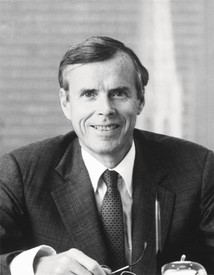
Donald Marron
Jacoba Urist profiles the legendary collector.
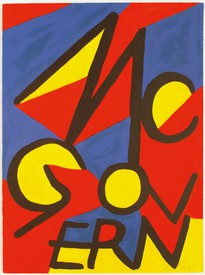
The Art History of Presidential Campaign Posters
Against the backdrop of the 2020 US presidential election, historian Hal Wert takes us through the artistic and political evolution of American campaign posters, from their origin in 1844 to the present. In an interview with Quarterly editor Gillian Jakab, Wert highlights an array of landmark posters and the artists who made them.
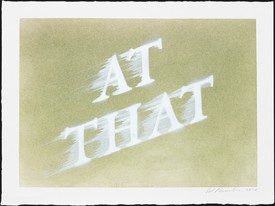
“Things Fall Apart”: Ed Ruscha’s Swiped Words
Lisa Turvey examines the range of effects conveyed by the blurred phrases in recent drawings by the artist, detailing the ways these words in motion evoke the experience of the current moment.

Artists’ Magazines
Gwen Allen recounts her discovery of cutting-edge artists’ magazines from the 1960s and 1970s and explores the roots and implications of these singular publications.
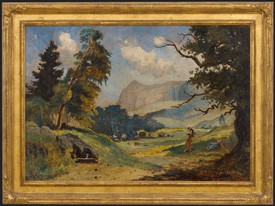
Eilshemius and Me: An Interview with Ed Ruscha
Ed Ruscha tells Viet-Nu Nguyen and Leta Grzan how he first encountered Louis Michel Eilshemius’s paintings, which of the artist’s aesthetic innovations captured his imagination, and how his own work relates to and differs from that of this “Neglected Marvel.”
News
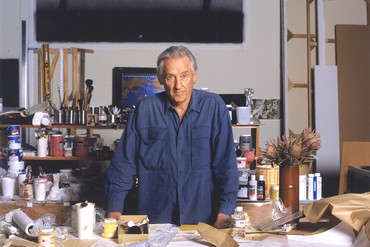
Artist Spotlight
Ed Ruscha
September 16–22, 2020
At the start of his artistic career, Ed Ruscha called himself an “abstract artist . . . who deals with subject matter.” Abandoning academic connotations that came to be associated with Abstract Expressionism, he looked instead to tropes of advertising and brought words—as form, symbol, and material—to the forefront of painting. Working in diverse media with humor and wit, he oscillates between sign and substance, locating the sublime in landscapes both natural and artificial. Ruscha’s formal experimentations and clever use of the American vernacular have evolved in form and meaning as technology alters the essence of human communication.
Photo: Kate Simon

galleryplatform.la
Ed Ruscha
Drum Skins
May 28–June 30, 2020
Gagosian is pleased to present recent paintings by Ed Ruscha online for galleryplatform.la. Fifty years ago, Ruscha purchased a set of vellum drum skins from a leather shop in Los Angeles. He has continued to collect these vintage objects, and since 2011 he has used them as canvases for the works on view in his solo exhibition Drum Skins at the Blanton Museum of Art at the University of Texas at Austin.
Installation view, Ed Ruscha: Drum Skins, Blanton Museum of Art, University of Texas at Austin, January 11–October 4, 2020. Artwork © Ed Ruscha
